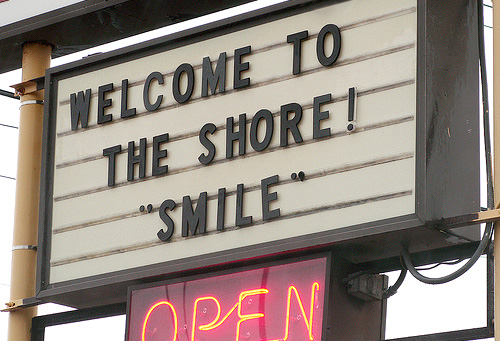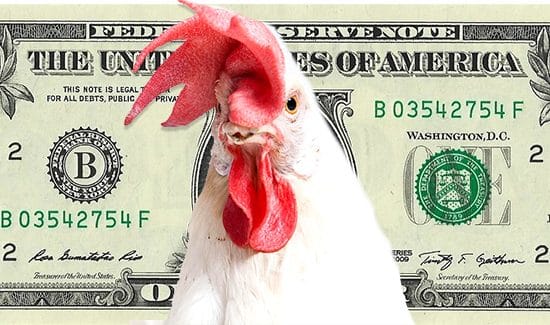Guest post by Paula Drum
In 2009, many life lessons were learned thanks to MTV’s Jersey Shore. For example, we were schooled in beating up the beat, warned about falling in love, discovered that life is better with a quacking duck phone and received the following gem courtesy of Mike the Situation:
“Gym, Tan, Laundry must be done every day to achieve maximum potential.”
Unfortunately, the Situation forgot one item: finances. Having a specific plan of action is important when you shop – especially when you decide to use credit. If you’re not as gung ho about your financial plan as you are about “GTL,” you’ll find yourself battling a tough financial situation.
While a lot of people tend to focus on getting in physical shape for the summer, we can sometimes neglect our financial health. Here are a few tips to help start a finance regimen that will shape up your wallet in time for warm weather fun:
- Create a plan – Similar to a diet or fitness regimen, planning is critical. Make note of all your monthly expenses compared to your monthly income. Figure out what expenses tend to take up the majority of your income, what expenses are the most frivolous and which are the most critical. Once you’ve categorized all of your monthly expenses, start to build out a monthly budget plan broken down by each category.
- Take small steps – Just like it’s not healthy to starve yourself or run a marathon without properly training, personal finance shouldn’t be extreme either. Small efforts to cut back your spending or budget more wisely can really help in the long run and are often more easily sustained and managed.
- Write things down – When nutritionists tell you to write down everything you eat, it’s because they want you to be more aware of your daily food intake. Finances should be no different. Writing down everything you purchase can help you to better understand where your money is going and be more aware of places you can cut back.
These steps are especially important to people that choose to shop with credit. To create a successful plan, it is imperative that you take the time to research total purchase cost, which includes the retail price plus interest accrued over time. To avoid creating “perma-debt” this credit budget must outline both the total cost of your purchases and how long it will take you to pay off the debt. Before you decide to make a credit purchase, follow these steps:
- Tally the retail price of your purchases: “The retail cost of my Stamina 50-lb Versa-Bell Dumbbells is $299.95.”
- Target a date to pay off your debt: “Based on my budget, I can pay this off in four months and have cash for whole summer’s worth of spiker gel.”
- Estimate your total cost plus interest: “My APR is 14.9 percent. The total cost to pay for my gym membership over four months is $309.24 broken into four monthly payments of $78.08.”
Of course your total credit card payment will depend on your particular card and the balance you currently have on the card. But you can estimate your real purchase price with interest to make an informed decision. Try a loan calculator at a site like Bankrate.com to find out how much a loan really costs. After all a credit card line is a form of a loan. Note that many calculators list the length of time in years. If you plan on paying off the loan in less than 12 months you’ll need to convert it to a fraction of a year (4 months divided by 12 months =.33)
Using the Bankrate.com loan calculator, the total cost to pay for this purchase over four months with a 14.9% interest rate is $309.24 broken into four monthly payments of $78.08.
All credit cards must now explain how long it will take you to pay off your bill if you only make the minimum monthly payments on your monthly statement. But knowing after the purchase doesn’t help you manage your finances better and being able to calculate your total cost plus interest may not always be convenient when shopping.
One avenue where you may find a better deal is by researching retailers with alternative payment plans, such as my employer Gettington.com, that provide a choice of payment plans along with a clear breakdown of a total purchase cost and interest paid before you make a purchase. (And yes, they do sell those Stamina 50-lb Versa-Bell Dumbbells to keep you in physical and financial shape). Transparency in understanding your total cost before you make your purchase enables you to make better budget decisions.
Remember: your financial plan is just as important as your workout. Although “GTL” can help you achieve maximum potential, you have to pay your bills – even on the Jersey Shore.
——————————–
Paula Drum is General Manager of Gettington.com, an e-commerce retailer that provides three payment options to help customers budget purchases that fit their individual financial needs.
(Photo by Sister72)
Get blog posts automatically emailed to you!





I think everyone needs to have a simple plan of action in order to shape up their finances
Good post! I have also seen the similarities between diet and finances, especially with food diaries vs expenses tracking. I know some also disclose their food diaries to keep them in check and I am sure that displaying your expenses to the world would also make you think twice before spending.
Summer is an easy way to get caught up in spending. Kids are home, weather is good, so many things to do and spend money on. Having a plan and budget is a great way to keep things in control
I think it is imperative to have a financial plan. Just like if you were going in vacation, you pick a location and then how the heck do you get there ? If you don’t have a map and just start driving in the general direction than i suppose eventually you might find the place you are looking for. But what about all the detours that you might find yourself along the way. Stopping for directions would always be good, but if you had planned the route before you left the house then chances are you would have had smooth sailing (bar any unforeseen circumstances, like a car flat tire or breakdown, just like in real life).
If you can get where you are going with the least amount of stress than it’s the best route of all to take. Get out your maps.
Nice post. Upon reading the first quote, I headed over to youtube to watch some of it and PLEASE tell me you do not watch that show! haha that is such a joke!
While the principles you talked about may seem basic, I think these basic things are what we often neglect the most. If consumers were to stop and analyze more purchases in this light, there would be a lot less credit card debt out there.
Haha…truth be told, I refused to watch it for a while. But then I got hooked!!! I know it looks trashy and seems to add zero value to society, but the kids on that show really aren’t that bad. Once you get to “know” them on the show you can appreciate the craziness :) Or at least I can. I think the media makes the show look way worse than it is, but regardless it sure was a hit! GTL, baby.
This is a great post. It is true that you need to start by doing small things to scale back your budget. An easy way to do this is by shopping around and trying to find as many discounts as possible. There are many discounts online that most people do not utilize enough. For example, money can be saved by eating at home instead of at restaurants. However, what after college job leaves you with the time to cook? Instead, Restaurant.com offers discounted gift cards to many local restaurants.
Check out http://www.facebook.com/pages/Recent-College-Grads-Move-Related-Advice-and-Discounts/118887708150382?ref=ts for many other online discounts.
I agree with Melissa. Love the post and the Jersey Shore reference :) There are plenty of ways to save if you’re looking for them.
This article has some more great ideas for saving up during the summer and getting your finances in shape. Thought you might like it!
http://www.gobankingrates.com/savings-account/get-your-finances-in-shape-for-the-summer-go-on-a-diet/
Enjoy!